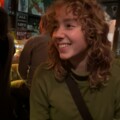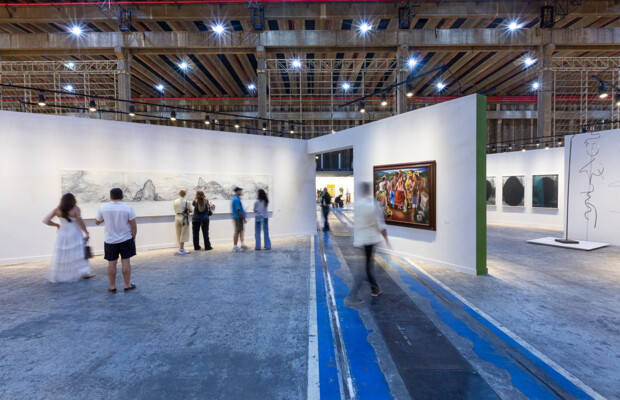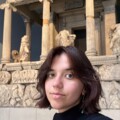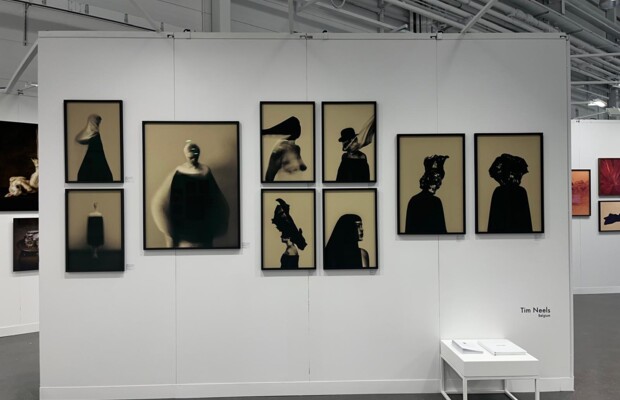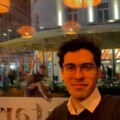Between No Longer and Not Yet: Exploring Post-anthropocentrism in Bio-art
This solo exhibition stands as a living testament to the power of eco-conscious art by blending artistic practices with scientific research to take viewers on a visual journey of the Amstel River and its various inhabitants
Between No Longer and Not Yet is part of a series of groundbreaking ecological art exhibitions held by Zone2Source in Amstelpark's Glazen Huis ("Glass House" in Dutch). In an inspired approach to post-human artistic production, Zone2Source welcomes artists to use the Amstelpark as a "living laboratory" for collective creation along with other human and non-human organisms. This summer, Dutch artist, researcher, and educator Xandra van der Eijk has invited the public to join them as part of their exhibition that investigates the nearby river Amstel as a living entity and surviving remnant of the Rhine Delta. Between No Longer and Not Yet is a three-part research exhibition in which the artist showcases past, present, and ongoing works while continuing to co-create with the Amstel by tapping into its inherent artistic knowledge.
Van der Eijk's research and exhibition offer a hopeful glimpse into the future of post-anthropocentric art - a field that dares to decentralize human perspectives and places environmental consciousness at its core. What can 'Between No Longer and Not Yet' tell us about the future of bio-art? Can artistic practices like that of Van der Eijk help us rethink sustainability from a non-humanistic perspective?
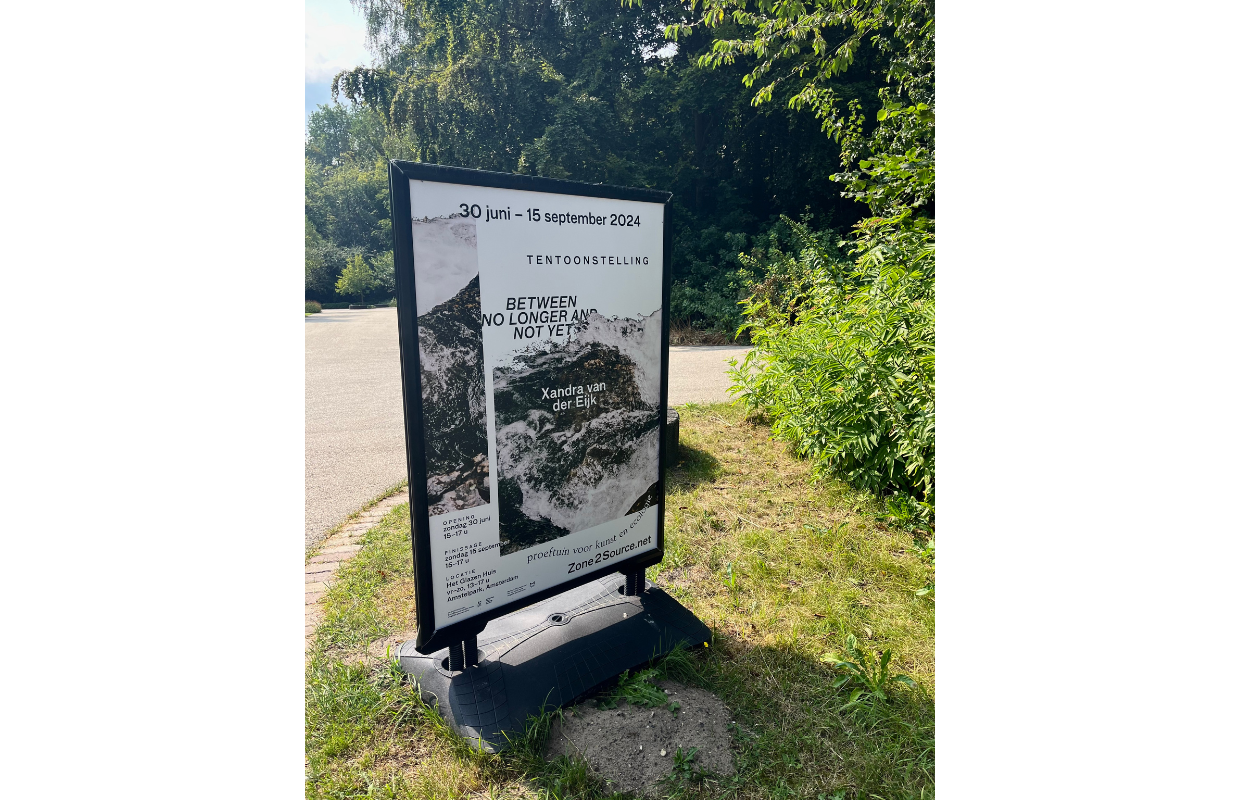
The Role of Post-anthropocentric Art
As we find ourselves in the Anthropocene era, academic and scientific discourses about environmental sustainability have become more dominant than ever. Yet, most conversations around sustainability remain essentially anthropocentric, focusing on human needs above the environment. In contrast, post-anthropocentric art emphasizes the intrinsic value of the environment and its non-human actors. This genre takes a profoundly affective turn in influencing audiences by teaching us how to show kindness, concern, compassion, and empathy towards the natural world.
Post-anthropocentric art directly engages with the world by challenging viewers to rethink their relationships with the environment. This bold confrontation struck me when viewing Xandra van der Eijk's 'Between No Longer and Not Yet'. The exhibition showcases a thoughtful investigation of the Rhine Delta, displaying the artist's deep concern and care for the river, its ecosystem, and living/ nonliving inhabitants. Van der Eijk's empathetic approach spills over into the hearts of audiences. Faced with the stark reality of a suffering riverine ecosystem, Van der Eijk's work shows us that we are lost without a shift in human positionality.
Embracing Multiple Otherness
Between No Longer and Not Yet stands out from most contemporary art exhibitions for its bold and defiant play with multiplexity. Van der Eijk's fusion of cross-disciplinary work and immersive mixed-media installations culminates in a deeply affective multisensory experience. The artist's various exhibited works lead viewers on a journey of their research across time, allowing us to explore the Dutch Rhine Delta and reflect on the consequences of human environmental interference.
The inspiration for Van der Eijk's solo exhibition, Between No Longer and Not Yet, centers on the river Amstel as a living entity with an endless reservoir of artistic knowledge. Van der Eijk's practice investigates the Amstel in an attempt to learn from it by employing careful, empathetic, and non-invasive mediation. The artist's research period also comprised multiple opportunities for public involvement. Characterized by empathy and inclusivity, Van der Eijk's approach to Between No Longer and Not Yet demonstrates how artists and non-artists can learn from the environment and each other. Let us explore the concept of post-anthropocentrism in bio-art, beginning with Van der Eijk’s dynamic installation River Garden.
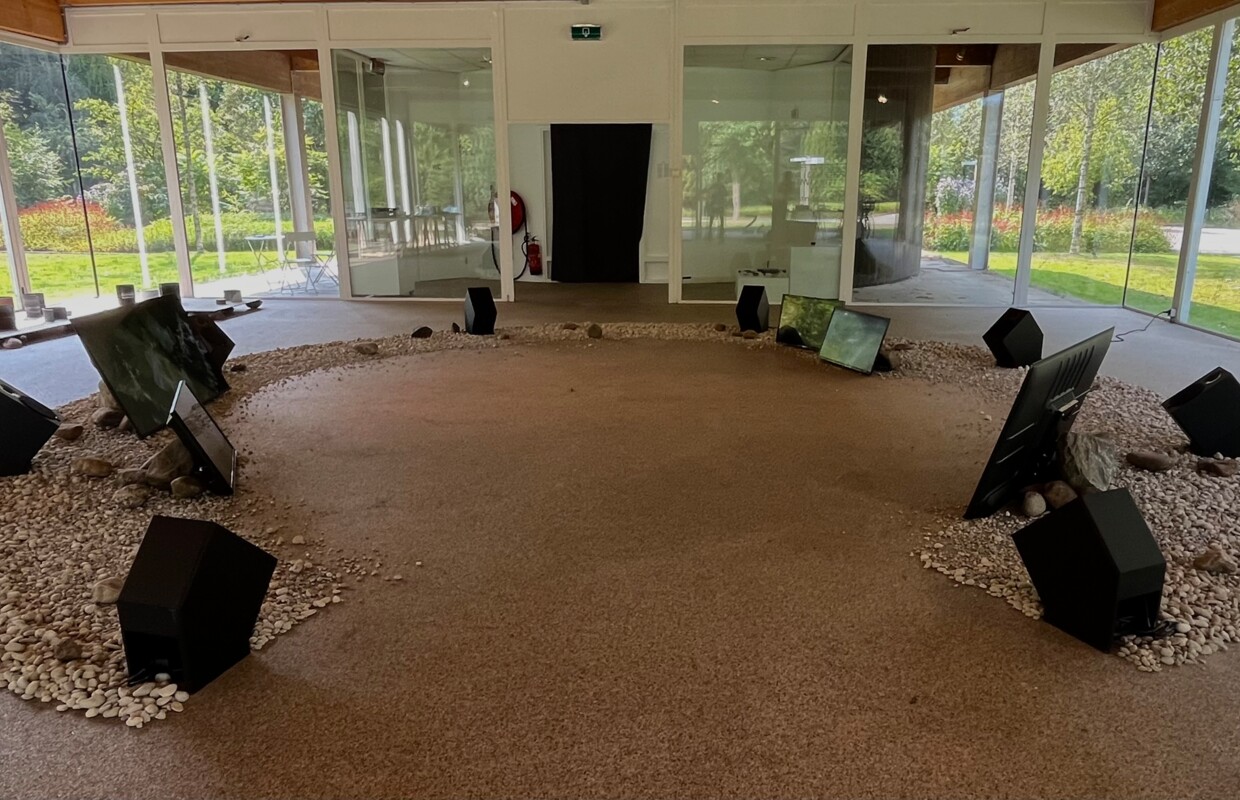
Central to the physical composition of the Glazen Huis exhibition area lies a large, technologically mediated ecosystem. 'River Garden' combines a grounded, circular, rocky formation with several standing monitors and an eight-channel soundscape to resemble a distorted underwater Dutch riverscape. Defined as a space "In becoming," River Garden is a continuously expanding spatial installation formed by collected live materials from the Delta.
Echoes of murky, underwater recordings reverberate throughout the room. River Garden's animate soundscape features the calls of endangered fish, many of which are on the brink of extinction. Van der Eijk urges us to consider their suffering and neglect. Why has Western scientific discourse failed to study the intricacies of fish acoustics? The artist asks, "Will [the fishes'] calls ever be answered? Will we listen to their lamentation?" These questions ring like forceful vibrations now looped in my mind.

While viewing 'River Garden', my thoughts kept returning to the implications of Van der Eijk's rhetorical questions. I sat down amidst the installation to make sense of the feelings that emerged. I carefully observe the distorted images of this riverbank, its sediment, plants, and various inhabitants, the sounds of running water, and foreign underwater languages. Placed in the center of 'River Garden', I became increasingly immersed in this environment and aware of how my actions affected it. I felt myself becoming this environment in all its suffering.
My experience of sitting amongst River Garden details a visceral reaction to the sights and sounds of a suffering ecosystem. Van der Eijk's installation serves as a stark reminder that, as humans, we are active participants in the climate catastrophe and must take collective responsibility for this. The emotive power and allure of this immersive artwork truly elicit critical self-reflection. 'Between No Longer and Not Yet' continues to challenge our environmental consciousness in the following installation called 'Future Remnants', a showcased body of research.

In 'Future Remnants', Van der Eijk observes the effects of exposing steel, aluminum, zinc, and copper objects to low-chemical household solutions for two to seven days. This research revolves around an attempt to trace the influence of humankind on the evolutionary development of mineral formation. Producing an astonishing array of crystals, pigments, and patterns, these beautiful yet terrifying chemical reactions are only a microscopic glimpse into the effects of large-scale chemical waste dumping.
As a continuous body of research, 'Future Remnants' is the only part of 'Between No Longer and Not Yet' that does not directly engage with an investigation of the Rhine Delta. Still, Van der Eijk's ongoing inquiry into human influence over the environment remains relevant to the rest of their exhibition.
Aiming to demonstrate how credible the alteration of Earth's mineralogy by mankind is, I set out to tangelize the concept through material research. Using only widely available household chemicals, used in everyday life, I created a wide range of material reactions and crystallizations
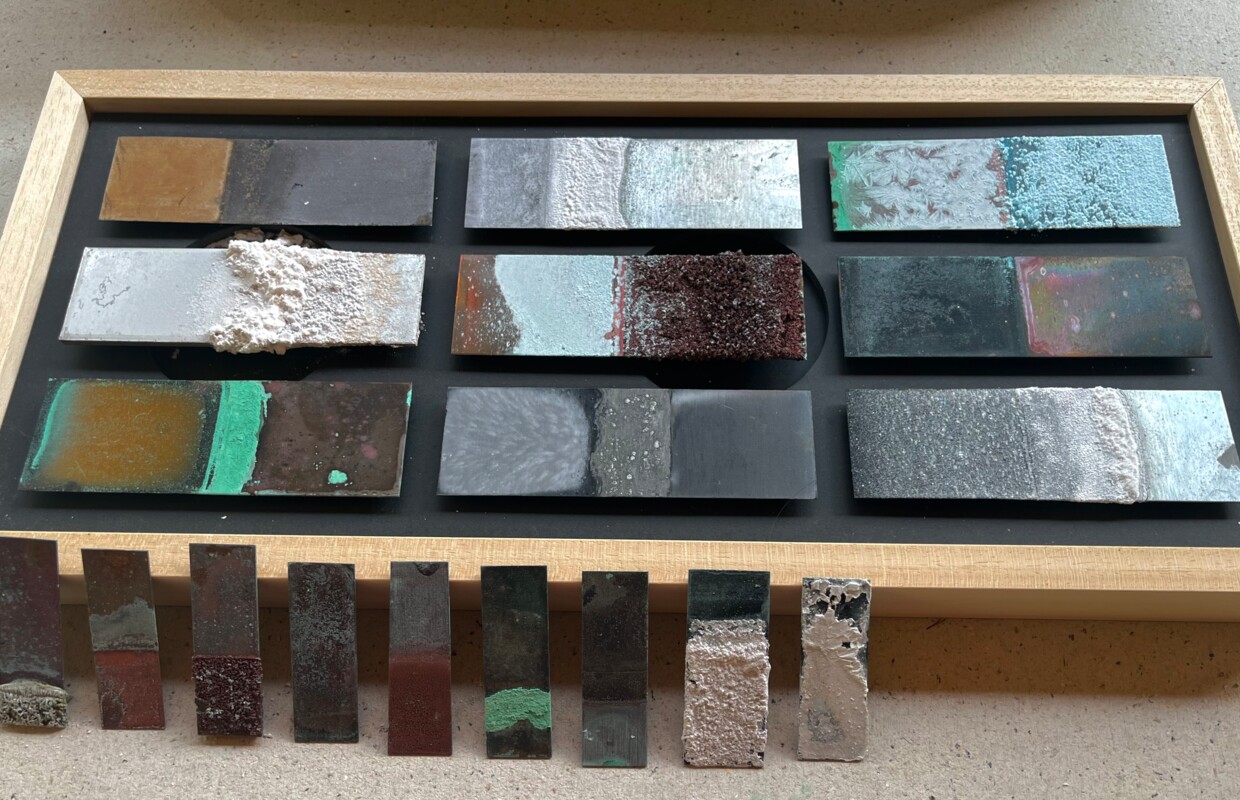
What does our profound influence over new mineral formation mean for the environment in the long term?
Some of Van der Eijk's objects are still undergoing visible reactions years after chemical exposure. 'Future Remnants' confronts us with the stark reality of Earth's future landscape. But, as these most pressing questions remain unanswered, our ethical responsibility becomes evident: we must make sense of the permanence of humankind's actions together.
I had the opportunity to discuss Van der Eijk's artworks with a few visitors during my tours of 'Between No Longer and Not Yet'. It was clear, throughout these conversations, that viewers often had conflicting feelings about the pieces in 'Future Remnants'. As a body of research that arouses such multifold implications and experiences, I can't fully understand my own feelings regarding these works. In fact, I find my sensory experience of 'Future Remnants' quite troubling. How can something that implies such devastating effects appear so aesthetically alluring? One woman told me that she found the overtones of Van der Eijk's research very frightening and difficult to think about. How wonderful, I thought, to see the role of post-anthropocentric art actively taking effect.
Fostering Community Dialogues
'Between No Longer and Not Yet' thrives on collective engagement. Post-anthropocentric art must critically engage with its audience to spark any real social change. In the case of this exhibition, public interactions and dialogues became indispensable means through which Van der Eijk's artwork and research responded quickly and effectively to the climate catastrophe.
As a part of their exhibition, Van der Eijk organized multiple open-research days during which people of all ages were encouraged to take part in their study of the Amstel River. Throughout one open day, participants were actively engaged in fieldwork as they collected raw materials from the Amstel's shores. This included gathering and preparing mussel shells for the final part of Van der Eijk's exhibition, 'Mother of Pearl'. On another day, participants could listen to the Amstel's underwater sounds using a specialized hydrophone. By including such events in the scheme of their exhibition, Van der Eijk did not merely immerse the public in their creative processes; instead, they shaped their research exhibition into a publicly accessible and pedagogical resource. This approach fosters opportunities for an open exchange of ideas, dialogues, and active learning, the necessary groundwork for implementing community-based activism.
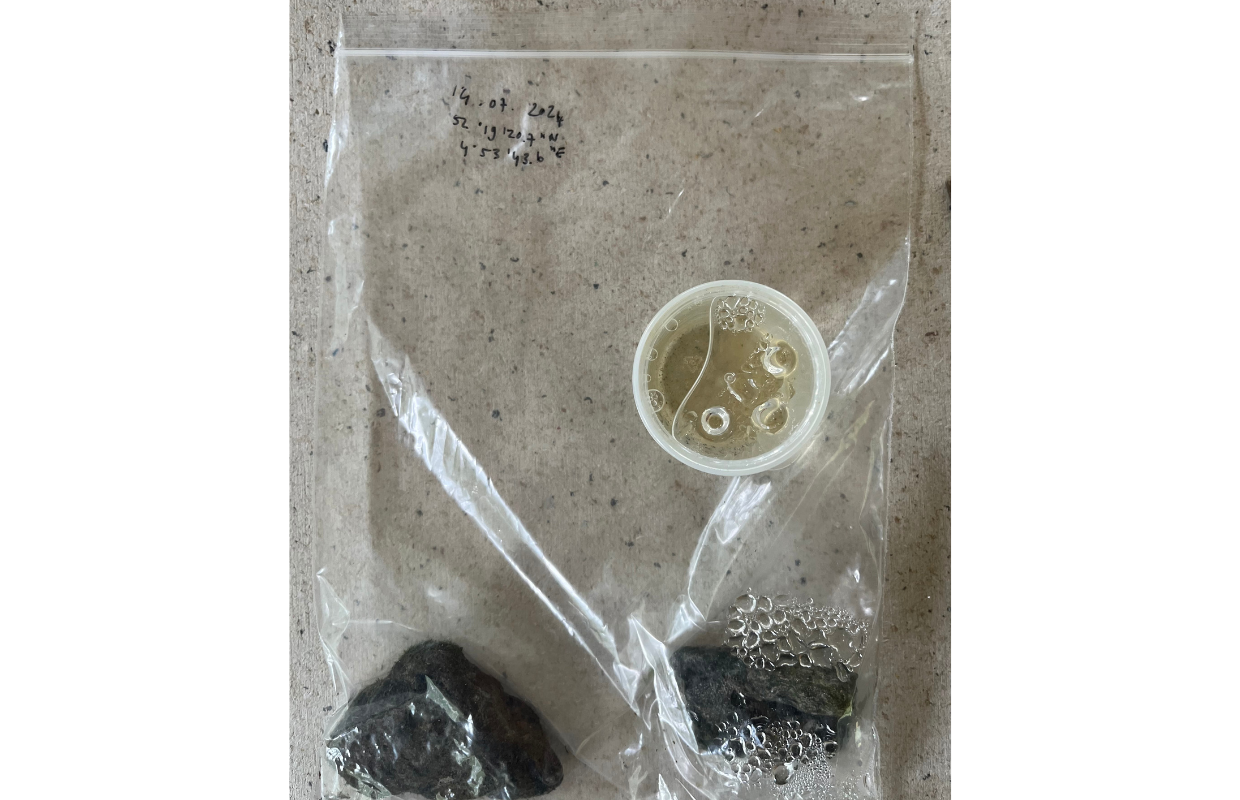

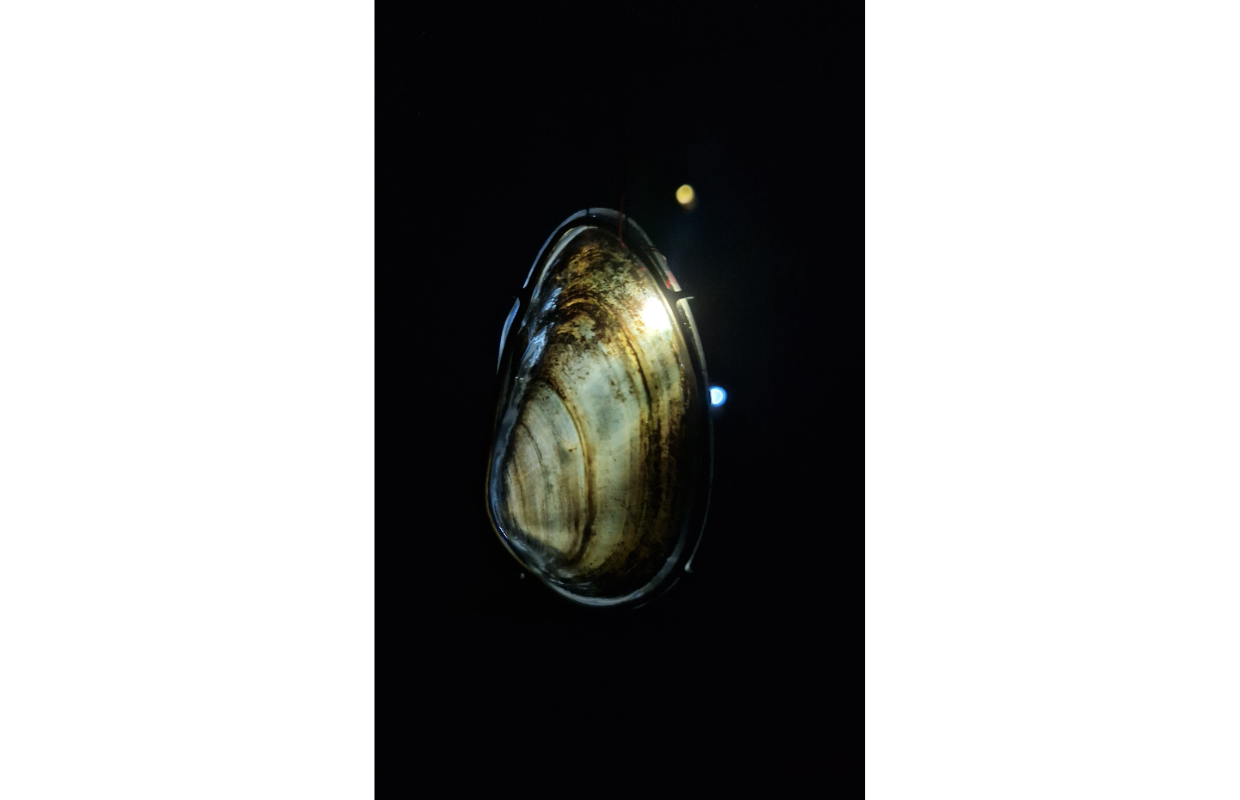
'Mother of Pearl' is the final and most impressive installation in 'Between No Longer and Not Yet'. For this part of their exhibition, Van der Eijk collected mussel shells along the Amstel's river bank, with the intention of giving them a final resting place after a life of experienced violence. The artist pays tribute to the lives of mussels and the sacrifices they make in sustaining the health of riverine ecology. A stunning backroom installation calls attention to this dying underwater ecosystem, allowing viewers the time and space for thoughtful reflection. Imagine yourself transported into a dark and lively underworld, looking up at the corpses of stars... 'Mother of Pearl' observes an entire species' past, present, and future through the mussels' starting pearls, an underdeveloped crystal ball.
Cloaked behind an unassuming curtain in the back of the Glazen Huis lies a dark room illuminated by a sea of pearly wonders. Suspended mid-air, a small light calls attention to each mussel shell's glorious, iridescent skin and their incipient pearls. Fished out of the river and dropped onto the shore by birds, these pearls haven't had the chance to grow big and live out their intended lifespan. Van der Eijk explains that the underdeveloped pearls remain a "testament to the mussel's caring response to an invisible underwater battle." As freshwater mussels clean and filter the water that passes through them, they are highly susceptible to any pollutants or irritants found in rivers. In the Netherlands, the endangerment of freshwater mussels has become a crisis, as many species of mussels are critically endangered. If these mussels become extinct, the entire riverine ecosystem faces catastrophic ends.
The artistic process is a study of [the mussels’] being, an act of witnessing, a testament to their past suffering. As an installation, the shells are the ghosts of their extinct ancestors and their living siblings still enduring a battle underwater…
'Mother of Pearl' pays homage to the lives of mussels by combining artistic practices with careful scientific mediation to induce self-reflection amongst observers. This compassionate and empathetic methodological and artistic approach serves as an inspiration for practicing bio-artists. Van der Eijk's multidisciplinary, immersive, and research-driven installation exemplifies the boundless potential of post-anthropocentric art in confronting climate catastrophe.
'Mother of Pearl' is a culmination of Van der Eijk's critical efforts throughout 'Between No Longer and Not Yet'. The artist fosters a deeper connection between humans and our environment, encouraging collective action, dialogue, and responsibility. Van der Eijk's exhibition affirms the radical, transformative potential of art. Still, it reminds us that this potential is lost without an audience willing to listen and act.
Share the post:
